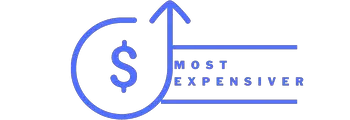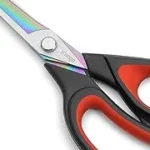Jakafi is an expensive medication used to treat myelofibrosis, a rare bone marrow disorder. It works by blocking specific substances in the body that can cause inflammation and fibrosis, which can lead to complications such as anemia and bone pain. The cost of this medication can be significant, as it is not covered by many insurance plans and must be purchased directly from the manufacturer.
The high cost of Jakafi is due to several factors. First, the medication is only produced in limited quantities, making it more expensive than other drugs with higher production levels. Additionally, it is a biologic therapy, meaning that its manufacturing process involves complex biological processes rather than chemical ones; this also contributes to its higher cost. Furthermore, due to its limited availability on the market, there are few generic options available for Jakafi; this further drives up the price of the medication. Patients may inquire about high cost:
Why is Jakafi so expensive? Jakafi’s high price tag is largely due to limited availability and production levels combined with extensive research and development costs associated with creating a new treatment for myelofibrosis. With these factors in mind, potential buyers should consider all their options before purchasing Jakafi in order to ensure they are getting the best deal possible for their needs.
In this blog article, we’ll explore why Jakafi tends to be so expensive and what types of financial assistance may be available for those who need it.
We’ll also discuss potential alternatives that can provide relief without as large an expense. By the end of this article, readers will have a better understanding of their options when faced with the high cost of Jakafi.
13 Reasons Why Jakafi is so Expensive
Jakafi is a medication used to treat several symptoms associated with myelofibrosis and polycythemia vera, two rare blood disorders. While it has been proven to be effective in treating these conditions, the cost of Jakafi can be prohibitively expensive for many patients. Here we explain 13 reasons why Jakafi can be so pricey.
1. Diminished Amount of Generic Jakafi
Jakafi, a medication used to treat certain types of myelofibrosis, is expensive due to the diminished amount of generic Jakafi on the market. Generic drugs are typically much less expensive than brand-name drugs, but there are fewer generic options for Jakafi. This creates an artificial shortage and drives up the price for patients who need this medication.
2. Longer-Term Health Benefits
Jakafi is a prescription medication used to treat chronic myeloid leukemia and polycythemia vera, two serious medical conditions. As such, the longer-term health benefits of taking it can be significant and life-saving. This is why the drug can be so pricey; manufacturers must charge higher prices to recoup the cost of research and development that went into creating the drug.
3. High Cost of Clinical Trials
Jakafi’s high cost is due in large part to the expensive clinical trials that are required for a medication to be approved by the FDA. These trials involve extensive research into the safety, efficacy, and side effects of the drug, and they must adhere to strict guidelines. Clinical trials can be expensive, both in terms of money and time. The cost of conducting these trials is passed on to consumers when they purchase Jakafi.
4. Lack of Insurance Coverage
Jakafi is often expensive due to the lack of insurance coverage. Many health insurance plans don’t cover Jakafi, meaning people must pay out of pocket for the medication. This can add up quickly and be a major barrier to accessing the drug. Those without insurance may find it hard to afford the treatment and be forced to look for other options. In addition, those who do have insurance may still face significant costs if their plan does not cover the entire cost of Jakafi.
5. Monopoly Status of the Manufacturer
Jakafi is a brand-name drug and the manufacturer of it holds a monopoly in the market. This means that there are no cheaper generic options available to consumers, making it more expensive than other medications. The lack of competition has allowed the manufacturer to set higher prices for their product, driving up the cost of Jakafi for patients who need it.
6. Expensive Manufacturing Process
Jakafi is pricey because its manufacturing process is expensive. This is due to the highly complex nature of producing a drug that requires precise chemical formulations, sophisticated equipment, and qualified personnel. The cost of this process rises even higher when considering the additional regulatory requirements, quality control protocols, and safety procedures that are necessary for a medication to be approved by the FDA.
7. Shortage of Ingredients
Jakafi can be pricey due to a shortage of ingredients. This is because the active ingredient in Jakafi must be sourced from certain suppliers, and when there is a limited supply available, prices can go up accordingly. In addition, the manufacturing process of Jakafi requires certain components that may also be hard to come by, making the cost of the drug more expensive.
8. Overhead Costs for Distribution
When it comes to the cost of Jakafi, one factor to consider is the overhead costs for distribution. This includes the costs associated with shipping, handling and storing this medication. The process of distributing Jakafi must adhere to certain standards and regulations set by governing bodies, which can add significant costs to the drug’s price tag. These overhead costs are a major contributor when it comes to why Jakafi can be so pricey.
9. Stringent Government Regulations
Stringent government regulations are a major reason why Jakafi can be so pricey. These regulations include requirements for safety, efficacy, and quality control that must be met in order for the drug to be approved for use. The manufacturer of Jakafi must invest a great deal of money in clinical trials and other research just to meet these regulatory standards. Furthermore, the company must also obtain additional licenses from various governmental agencies before the drug can be distributed, driving up the cost even further.
10. Market Forces and Supply & Demand Equation
Market forces and the supply & demand equation play a major role in determining the cost of Jakafi. The price of any product is determined by how much demand there is for it compared to the amount of supply available. If there is more demand than availability, then the price increases; if there is more supply than demand, then prices go down. In the case of Jakafi, its high cost can be attributed to a larger demand than what is currently supplied – leading to an increased cost for consumers.
11. Quality Control Protocols
Quality control protocols are essential to ensure the safety and efficacy of Jakafi, and consequently, this adds to the cost. These protocols involve a series of tests to ensure that the product meets all regulatory requirements before being approved for sale. Additionally, it must be verified that the drug is safe for use in humans and has no adverse effects on patients. This thorough process requires additional resources, resulting in increased prices.
12. Unfavorable Foreign Exchange Rates
Jakafi, a medication used to treat myelofibrosis, can be pricey due to unfavorable foreign exchange rates. This means that the price of the drug increases as the currency of its country of origin weakens compared to other currencies. For example, if Jakafi is manufactured in another country with a weaker currency than the US dollar, it will cost more for American consumers when converted from its original currency into USD.
13. Tax Implications
Jakafi is considered one of the costlier treatments for certain medical conditions, and taxes can play a part in this. Governments often impose taxes on medications and treatments, which can drive up the price of Jakafi for consumers. The amount of tax can vary from state to state or country to country, making the price of Jakafi even more expensive depending on where it is purchased.

7 Ways to get Jakafi in Low budget
When it comes to getting Jakafi, a medicine used to treat myelofibrosis, at an affordable price, there are several options available. most important point is to research all of these options and find the best solution for your particular situation. Here we offer you 7 affordable ways to get Jakafi on a budget.
1. Ask Your Doctor About Patient Assistance Programs
If you’re on a budget, the first step to getting Jakafi is to ask your doctor about any patient assistance programs that can help you. These programs are designed to reduce or eliminate the cost of medications for those who qualify. Some programs may provide free or discounted medicines, while others may cover copays or deductibles. Be sure to ask your doctor for more details so you can determine if this is an option for you.
2. Research Co-Pay Assistance Programs
If you are looking for ways to get Jakafi on a budget, researching co-pay assistance programs is a great option. These programs can provide financial help to eligible patients, allowing them to pay a reduced co-pays for their Jakafi prescriptions. Many of these programs are offered by the manufacturer of the drug, so it’s important to check their website and learn more about what’s available. Additionally, patient advocacy organizations may also offer co-pay assistance programs that could be beneficial.
3. Look Into Insurance Coverage Options
Looking into insurance coverage options is a great way to save money on Jakafi. Before deciding on a plan, be sure to research what type of coverage you’ll need in order to receive the medication and how much you may need to pay out-of-pocket. It’s also important to check whether an insurance provider covers Jakafi, as some plans may not include this drug in their formulary.
4. Utilize Clinical Study Participation
Participating in clinical studies is a great way to get Jakafi at an affordable price. Clinical studies are research studies that investigate new treatments or therapies that are not yet approved by the FDA. Participants in these studies will often be provided with access to the drug at no cost, or at a reduced rate. If you qualify for a study, it could be a great way to get Jakafi while saving money.
5. Consider Using a Prescription Discount Card
Prescription discount cards are a great way to get Jakafi for less. These cards offer discounts off the retail price of medications and are accepted at most major pharmacies. With most cards, you can save up to 80% on brand name drugs and up to 40% on generics. It’s easy to find one online and you don’t need to pay a fee or provide personal information in order to use it. Be sure to read the fine print before signing up for any particular card, as there may be restrictions that limit how much you can save.
6. Take Advantage of Financial Support Services
Financial support services are a great way to get Jakafi on a budget. These services can provide financial assistance for patients who need help paying for the cost of their medication. Many programs exist, such as those offered by patient advocacy organizations and pharmaceutical companies, that can help cover the costs associated with Jakafi and other medications. It is important to research these services thoroughly to ensure that you are eligible and can make the most of the available resources.
7. Look Into Generic Alternatives
Looking into generic alternatives is a great solution if you’re looking to get Jakafi on a budget. A generic alternative is an alternative to the brand-name drug that offers the same active ingredients as the original, but at a much lower cost. Speak with your doctor and pharmacist about your options for getting a generic alternative of Jakafi, and see if it fits into your budget.
Is it worth to Use Jakafi?
Whether or not it is worth using Jakafi depends on your individual situation. Jakafi is an expensive medication and may not be right for everyone. It is important to research all of your options and weigh the risks and benefits of taking Jakafi before making a decision. Consulting with your doctor can help you determine if it is a suitable treatment option for you. Additionally, there are several ways to reduce the cost of Jakafi, such as utilizing co-pay assistance programs, taking advantage of insurance coverage options, participating in clinical studies, using a prescription discount card, and looking into generic alternatives.
What is Average Cost of Jakafi in Different Countries?
The average cost of Jakafi varies widely across countries. In the United States, the average cost for a one-month supply of Jakafi ranges from about $3,700 to over $6,000. In Canada, the cost is around $1,800 for a one-month supply. The average cost in the UK is around £930 for a one-month supply and in Australia it is approximately AU$2,400 for a one-month supply.
What is Most Expensive Medicine for polycythemia vera?
The most expensive medicine for polycythemia vera is Jakafi (ruxolitinib). Jakafi is a targeted therapy that works by blocking certain proteins that help cause the overproduction of red blood cells. It has been shown to be effective at reducing symptoms, such as fatigue and itching, and can slow or stop the progression of the disease. However, it is also very expensive, with a one-month supply costing up to $6,000 in the United States.
Frequently Asked Questions
How long can you take Jakafi for?
The recommended dose of Jakafi is 10 mg twice daily and can be taken for as long as it is needed to control the symptoms of polycythemia vera. Your healthcare provider will monitor your response to Jakafi and may adjust your dosage or length of treatment depending on how you respond.
What are the side effects of Jakafi?
Common side effects associated with taking Jakafi include chills, fever, headache, dizziness, nausea, vomiting, diarrhea, coughing, rash and muscle pain. More serious side effects may occur including severe allergic reactions, difficulty breathing and bleeding.
Is Jakafi better than hydroxyurea?
It is not possible to say whether Jakafi is better than hydroxyurea without considering the individual patient’s medical history and other factors. Both medications can be effective treatments for certain types of blood disorders, but the best treatment option for a particular patient will depend on their individual needs.
Is there a generic drug for Jakafi?
Yes, there is a generic version of Jakafi available. The generic drug is called ruxolitinib phosphate and it is made by Incyte Corporation. It contains the same active ingredient as Jakafi, but has been approved by the Food and Drug Administration (FDA) at a lower cost. Speak with your doctor and pharmacist about the availability of the generic version of Jakafi and whether or not it fits into your budget.
Is Jakafi considered chemotherapy?
No, Jakafi is not considered chemotherapy. It is a targeted therapy that works by blocking certain proteins that help cause the overproduction of red blood cells. Chemotherapy is a type of treatment that uses drugs to kill cancer cells or stop them from growing and dividing.
Bottom Lines
Jakafi is an expensive medication due to its manufacturer, Incyte, having exclusive rights to produce the drug. The high cost of Jakafi can often be prohibitive for those who need it most, leading to a difficult decision between taking the medication or going without. To help make this decision easier, patients should speak with their healthcare provider about potential discounts that may be available for Jakafi. Additionally, further research on other medications or treatments may be beneficial in helping to ease some of the financial burden associated with Jakafi treatment.
Jakafi is an expensive medication used to treat myelofibrosis, a rare bone marrow disorder. It works by blocking specific substances in the body that can cause inflammation and fibrosis, which can lead to complications such as anemia and bone pain. The cost of this medication can be significant, as it is not covered by many insurance plans and must be purchased directly from the manufacturer.
Finally, patients should discuss any questions they have regarding their medication and treatment options with their healthcare provider. Call to action: Take control of your health and speak to your healthcare provider today!







